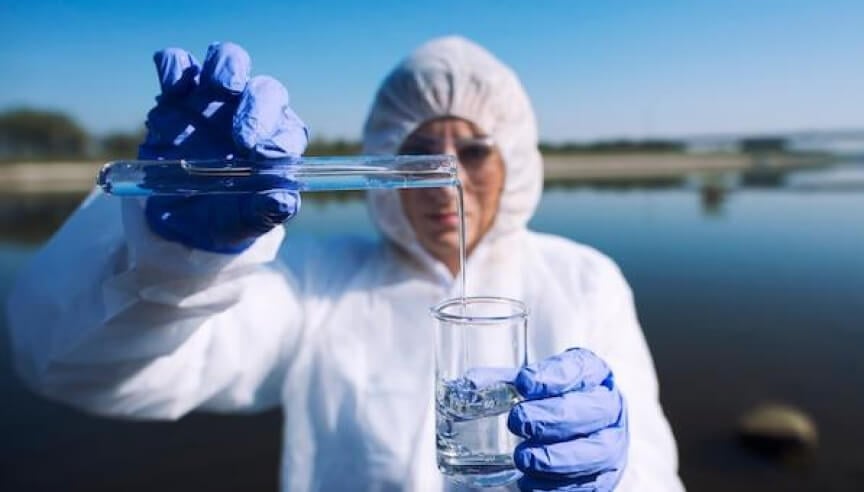Recent Posts
Methods of Water Disinfection

Chemical and Non-Chemical Methods of Water Disinfection
Water disinfection is essential in various sectors such as municipal water treatment, industrial processes, and commercial applications to ensure safety and prevent waterborne diseases. Disinfection methods can be broadly classified into chemical and non-chemical approaches. Both methods have their advantages and specific applications depending on the type of contamination, the scale of treatment, and the desired outcomes. Below is an overview of common chemical and non-chemical water disinfection techniques.
1. Chlorine Dosing and Chlorinators
Chlorine is one of the most widely used disinfectants due to its effectiveness in killing pathogens like bacteria and viruses. Chlorine dosing can be achieved through manual addition or automated chlorinators. These chlorinators regulate the dose of chlorine into water, ensuring adequate disinfection without exceeding safety thresholds.
- Chlorinators are devices used to meter chlorine into the water supply. They can range from simple manual dosing systems to complex automated units that adjust the chlorine feed based on the flow rate and contamination level in the water. Continuous monitoring is crucial to maintain optimal chlorine residuals.
2. Sodium Hypochlorite Generators
Sodium hypochlorite (NaOCl) is another commonly used disinfectant, especially in locations where chlorine gas use may pose safety concerns. Sodium hypochlorite generators produce NaOCl on-site by electrolyzing saltwater.
- On-site generators are advantageous because they eliminate the need to transport and store large quantities of liquid chlorine or chlorine gas. This also reduces safety risks related to chlorine handling. Sodium hypochlorite is a less hazardous alternative, but it requires careful dosing as excessive concentrations can lead to the formation of harmful byproducts like trihalomethanes (THMs).
3. Chlorine Dioxide Generators
Chlorine dioxide (ClO₂) is highly effective against various pathogens, including bacteria, viruses, and protozoa. Unlike chlorine, it does not react with organic matter to form harmful byproducts such as THMs, making it a preferred choice in many water treatment systems.
- Chlorine dioxide generators produce ClO₂ on-site by either the acid-chlorite method or the chlorine-chlorite method. These generators carefully control the mixing of chemicals to ensure safe and efficient production of ClO₂. Chlorine dioxide is particularly useful in systems where water contains high levels of organic materials or for applications requiring high purity disinfection.
4. Analyzers of Chlorine and Ozone in Water and Air
Water and air disinfection processes often require precise monitoring of disinfectant levels to ensure efficacy and safety. Chlorine and ozone analyzers are essential tools in this regard.
- Chlorine analyzers monitor free and total chlorine levels in water to maintain proper disinfection. These analyzers ensure the dosage is neither too low (which might lead to inadequate disinfection) nor too high (which could result in harmful byproducts).
- Ozone analyzers measure ozone concentrations in both water and air. Since ozone can be hazardous to human health in high concentrations, continuous monitoring is necessary to ensure that ozone levels are kept within safe limits in treatment environments.
5. Hydrogen Peroxide Generators
Hydrogen peroxide (H₂O₂) is another powerful chemical disinfectant used in water treatment. It decomposes into water and oxygen, leaving no harmful residues, which makes it ideal for applications requiring environmentally friendly disinfection.
- Hydrogen peroxide generators produce H₂O₂ on-site through the electrolysis of water. These systems are commonly used in combination with other disinfection methods such as UV or ozone to enhance microbial control. In some applications, hydrogen peroxide is applied as a standalone disinfectant due to its oxidizing power and the fact that it breaks down quickly without leaving toxic byproducts.
6. UV Systems
Ultraviolet (UV) light disinfection is a non-chemical method widely used in drinking water, wastewater, and industrial applications. UV systems expose microorganisms to UV light, which damages their DNA and renders them inactive.
- Open and closed systems:
UV systems can be classified as either open (where water flows over a UV light source) or closed (where water flows through a chamber containing UV lamps). Closed systems are more common in pressurized environments, while open systems are used in gravity-fed or low-pressure systems. - Medium and low pressure UV:
Medium-pressure UV lamps emit a broader range of UV wavelengths and are often used in high-flow, industrial applications. Low-pressure UV lamps are more energy-efficient and are primarily used in smaller-scale systems.
7. Ozonation Systems
Ozone (O₃) is a strong oxidant used in water treatment for its ability to inactivate bacteria, viruses, and protozoa. Ozone disinfection leaves no harmful residues but decomposes quickly, meaning it requires on-site generation.
- Ozone generation from air or oxygen:
Ozonation systems produce ozone by passing either ambient air or pure oxygen (from oxygen cylinders) through an electric discharge (corona discharge). When using oxygen from cylinders, the concentration of ozone produced is higher and more efficient. Oxygen balloons (cylinders) are often used in industrial applications where high-purity ozone is necessary. For smaller-scale systems, air is commonly used as the feed gas.
The selection of a chemical or non-chemical disinfection method depends on factors such as the type of water being treated, regulatory requirements, and operational considerations. Chemical methods like chlorine, sodium hypochlorite, chlorine dioxide, and hydrogen peroxide offer reliable disinfection but must be carefully managed to avoid harmful byproducts. Non-chemical methods, such as UV and ozone, provide powerful alternatives with fewer chemical residues but often require more sophisticated equipment and monitoring systems. By integrating both chemical and non-chemical approaches, water treatment systems can achieve higher levels of safety and effectiveness.
